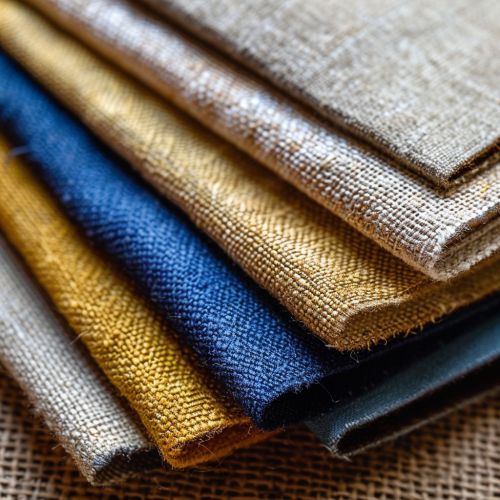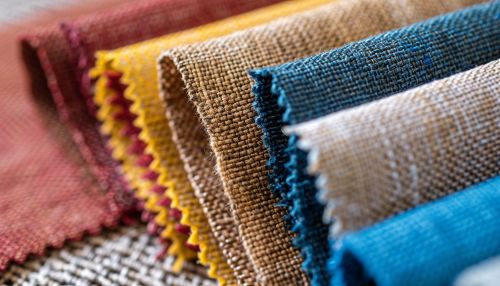Bookbinding cloth
Introduction
Bookbinding cloth, also known as book cloth, is a specialized fabric used in the binding of books. It serves both a functional and aesthetic purpose, providing durability and an attractive cover for books. This article delves into the various types of bookbinding cloth, their historical development, manufacturing processes, and applications in modern and traditional bookbinding.
Historical Development
The use of cloth in bookbinding dates back to the early 19th century. Before the advent of book cloth, books were typically bound in leather, which was expensive and labor-intensive to produce. The introduction of book cloth revolutionized the bookbinding industry by providing a more affordable and versatile alternative.
Early Innovations
The first significant innovation in book cloth came in 1823 when William Pickering and Archibald Leighton developed a method for treating cotton cloth with starch to make it suitable for bookbinding. This process involved coating the cloth with a mixture of starch and other substances to create a smooth, durable surface that could be easily adhered to book covers.
Industrialization
The industrial revolution brought about significant advancements in the production of book cloth. Mechanized looms and improved dyeing techniques allowed for the mass production of high-quality book cloth in various colors and textures. By the mid-19th century, book cloth had become the standard material for book covers, replacing leather in many cases.
Types of Bookbinding Cloth
Bookbinding cloth comes in a variety of types, each with its unique properties and applications. The most common types include buckram, linen, and cotton.
Buckram
Buckram is a heavy-duty book cloth made from cotton or linen and coated with a stiffening agent such as starch or pyroxylin. It is known for its durability and resistance to wear and tear, making it ideal for library bindings and other high-use books.
Linen
Linen book cloth is made from flax fibers and is prized for its strength and natural luster. It is often used for high-quality, decorative bindings due to its attractive appearance and durability.
Cotton
Cotton book cloth is made from cotton fibers and is available in a wide range of colors and textures. It is commonly used for general-purpose bookbinding and is valued for its versatility and affordability.
Manufacturing Processes
The production of bookbinding cloth involves several steps, including weaving, dyeing, and finishing. Each step is crucial in ensuring the final product meets the desired quality and performance standards.
Weaving
The first step in manufacturing book cloth is weaving the base fabric. This is typically done using a loom, which interlaces the warp and weft threads to create a stable, uniform fabric. The type of weave used can vary depending on the desired properties of the final product.
Dyeing
Once the fabric is woven, it is dyed to achieve the desired color. This can be done using various dyeing techniques, including vat dyeing, reactive dyeing, and pigment dyeing. The choice of dye and dyeing method can significantly impact the colorfastness and overall appearance of the book cloth.
Finishing
The final step in the production of book cloth is finishing, which involves treating the fabric with various substances to enhance its properties. This can include coating the cloth with starch or pyroxylin to increase its stiffness and durability, as well as applying a finish to improve its resistance to moisture and stains.
Applications in Bookbinding
Bookbinding cloth is used in a wide range of bookbinding applications, from traditional hand-bound books to modern mass-produced volumes.
Traditional Bookbinding
In traditional bookbinding, book cloth is often used for the covers of hand-bound books. It provides a durable and attractive covering that can be easily decorated with gold leaf, embossing, or other decorative techniques.
Modern Bookbinding
In modern bookbinding, book cloth is used for both hardcover and softcover books. It is often used in conjunction with other materials, such as paper or board, to create a sturdy and visually appealing book cover.
Preservation and Conservation
Bookbinding cloth plays a crucial role in the preservation and conservation of books. Its durability and resistance to environmental factors make it an ideal material for protecting books from damage over time.
Conservation Techniques
Conservationists often use book cloth in the repair and restoration of damaged books. This can involve re-covering a book with new cloth or reinforcing the existing cover to prevent further deterioration.
Environmental Considerations
The production and use of book cloth also have environmental implications. Many modern book cloths are made from synthetic materials, which can have a negative impact on the environment. However, there is a growing trend towards using more sustainable materials, such as organic cotton and recycled fibers, in the production of book cloth.
See Also
- Bookbinding
- Conservation and restoration of books, manuscripts, documents and ephemera
- Textile manufacturing


